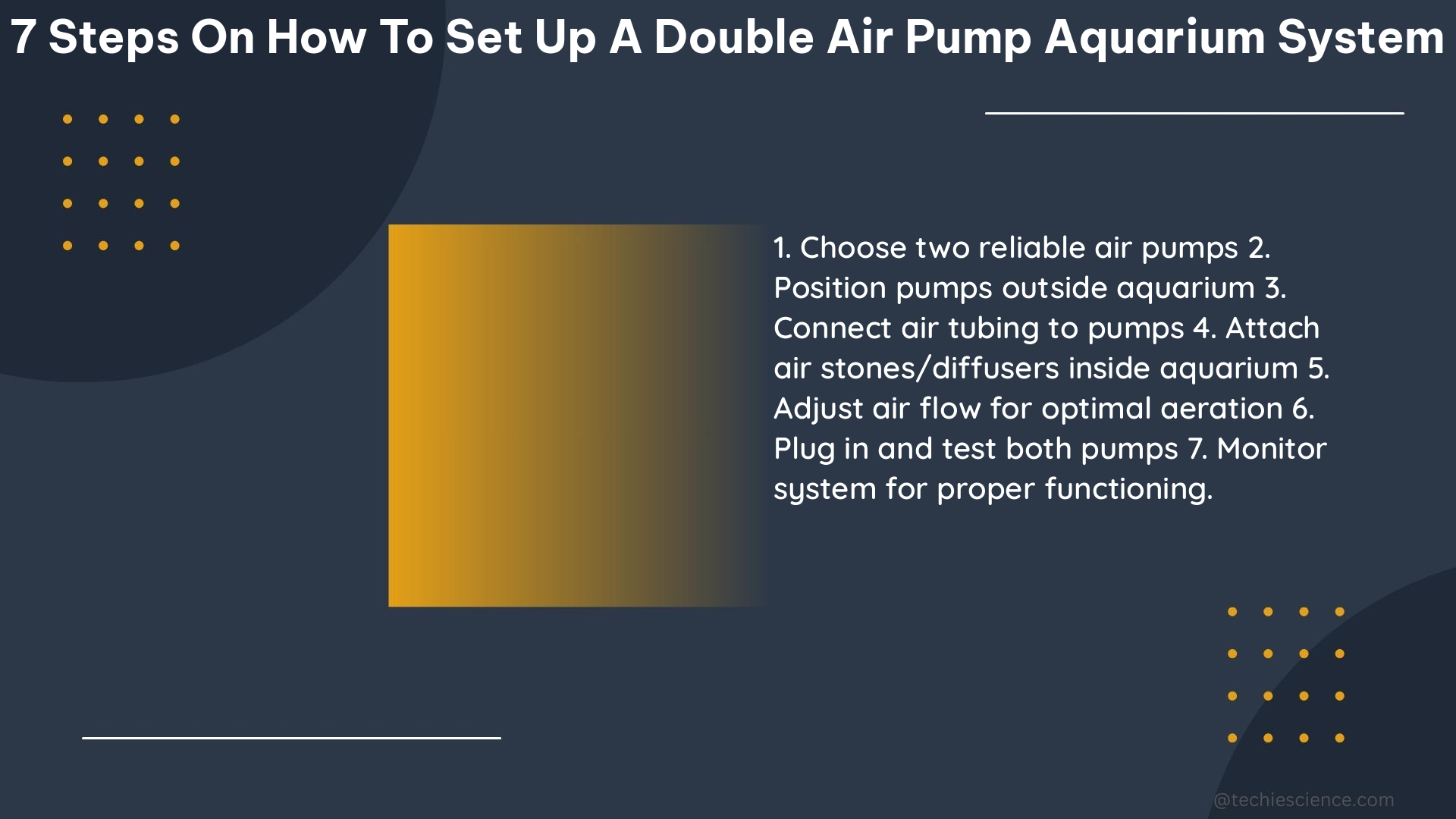Setting up a double air pump aquarium system can be a game-changer for your underwater ecosystem, providing reliable and redundant aeration to keep your fish and plants thriving. In this comprehensive guide, we’ll walk you through the 7 essential steps to establish a high-performance, low-maintenance double air pump setup.
Step 1: Select the Ideal Air Pump
When choosing an air pump for your double system, consider factors like the size of your aquarium, the number of air-driven devices you plan to use, and the acceptable noise level. For a robust double air pump setup, opt for a pump with at least two outlets, such as the Tetra Whisper Air Pump, which can handle tanks up to 60 gallons.
The Tetra Whisper Air Pump boasts a flow rate of 4.9 liters per minute (LPM) per outlet, ensuring ample aeration for your aquarium. Its dual-outlet design allows you to connect two separate air lines, creating a redundant system that can continue operating even if one pump fails.
Step 2: Measure the Airline Tubing Length

Accurately measuring the distance between your air pump and the air-driven devices (e.g., air stones, sponge filters) in your aquarium is crucial for determining the required length of airline tubing. As a general rule, add an extra 2 feet to the measured distance to account for any bends or loops in the tubing.
For example, if your air pump is placed on a table next to a 20-gallon tank, and your air stone is approximately 2 feet away, you would need at least 4 feet of airline tubing to connect the two. This allows for a clean, organized setup without excessive slack in the lines.
Step 3: Securely Install the Air Pumps
Position the air pumps in a location that is easily accessible, well-ventilated, and safe from potential water splashes. Ensure that the pumps are level and stable to maintain optimal performance and minimize vibrations.
Consider placing the air pumps on a sturdy surface, such as a shelf or a dedicated stand, to keep them elevated and away from potential moisture sources. This not only enhances the longevity of the pumps but also makes it easier to access and maintain the system.
Step 4: Connect the Airline Tubing
Attach one end of the airline tubing to the air pump outlets, ensuring a secure and airtight connection. For multiple air-driven devices, use a T-valve or a gang valve to split the air flow from a single pump outlet.
When using a T-valve, you can adjust the air flow to each device independently, allowing you to fine-tune the aeration for your specific aquarium needs. Alternatively, a gang valve provides individual air valves for each outlet, giving you even more control over the air distribution.
Step 5: Install Check Valves
Incorporate check valves into your airline tubing to prevent water from flowing back into the air pumps in the event of a power outage or pump failure. These one-way valves should be installed close to the air pump outlets and above the water level in your aquarium.
The check valves used in this setup should have a cracking pressure between 0.05 to 0.1 psi, ensuring reliable operation without restricting the air flow too much.
Step 6: Adjust the Air Flow
Fine-tune the air flow to each air-driven device using the air valves or T-valve. This step is crucial to ensure that each component receives the appropriate amount of aeration, optimizing the overall performance of your double air pump system.
Adjust the air flow gradually, monitoring the bubbles and the response of your aquatic inhabitants. The goal is to achieve a steady, even distribution of air throughout the aquarium without creating excessive turbulence or disrupting the delicate balance of your underwater ecosystem.
Step 7: Regularly Monitor the System
Regularly inspect your double air pump aquarium system to ensure its continued reliable operation. Check for any air leaks, obstructions in the tubing, or signs of wear and tear on the pumps and valves.
Additionally, keep an eye on the overall health and behavior of your aquatic life, as changes in aeration can directly impact the well-being of your fish and plants. Promptly address any issues that arise to maintain a thriving, well-oxygenated aquarium environment.
By following these 7 steps, you can set up a robust and redundant double air pump aquarium system that will provide reliable aeration and support the long-term success of your underwater ecosystem. Remember to refer to the technical specifications and quantifiable data provided to ensure optimal performance and customization to your unique aquarium setup.
References:
– Dumb Air Pump w/ 2 Outlets – Only Need 1
– 7 Steps on How to Set Up a Double Air Pump Aquarium System
– Air Pump with Multiple Tanks
– Aquarium Air Pump Basics
– Aquarium Air Pump Guide
